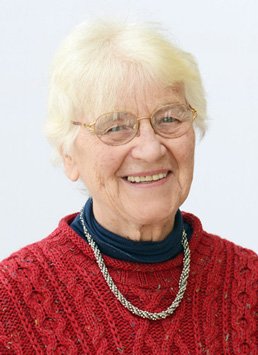Society for the Study of Women Philosophers, Inc.
a non-profit, tax-exempt educational charity 501(c)3 Internal Revenue Code
Beatrice (Beatriz) of Nazareth, beguine
1200-1268
Religious epistemology, mysticism
|
Kate Lindemann's Women Philosophers pages |
 |
Remember!! Your purchase of books by clicking on Abe Books or Amazon links through this site earns us a small commission that is used to provide travel scholarships. |
Beatrice of Nazareth was born in the year 1200 near Leuven, in the town of Tienen, Belgium. She was the youngest of six children. Her mother began her education at home but her mother died when she was only seven years old. Her father then sent her to live with a community of Beguines in the nearby town of Zoutleeuw.
Beatrice of Nazareth was really taken by the community and it is said that she loved these women even more than her parents. (Here is a brief article about the Beguines )
While in Zoutleeuw she continued her education and she studied the liberal arts at the local town school which was co-educational. Although she studied, she did not enter into the school's social life and is said to have been rather solitary. More than a year passed and then her father arranged for her to return home.
Increasingly Beatrice of Nazareth showed a desire to enter a monastery Her father took her to Florival where there was a Cistercian monastery. At the age of 10, she became an oblate at the monastery. She continued her education while at Florival.
At the age of 15 she asked to become a novice but at first the Abbess and the community would not agree to her entering the community in this formal way because of her young age, her weak constitution and her " inability to finance the necessary expenses". (I presume this means that she did not have sufficient dowry. Communities depended on dowries to support their members.) Beatrice of Nazareth was persevering in her request and sometime in the next year, the community acquiesced and she was clothed as a novice.
The novitiate usually lasts a year and during this time the prospective nun 'tests her vocation', joins the community for the chanting of the Divine Office and studies the meaning and scope of the vows. She persevered and made her profession (permanent entry into the religious order) sometimes after mid April of 1216.
After her profession, the abbess sent Beatrice to the Cistercian monastery at La Ramee to learn how to write manuscripts, especially Choir books. It is probably an indication that Beatrice was not only bright but that she was artistically talented as well. Choir books, which would be used by the community for the singing and chanting of Divine Office and Mass were often illuminated. That means that the letters, page edges and borders were done in gold ink or gold leaf. These were precious works of Some of the loveliest illuminated manuscripts from Europe's Middle Ages are those of choir books.
After her training she returned to the Monastery at La Ramee. It is said that the choir book was completed under her direction. You can view of copy of this choir book at Beatrice of Nazareth Choir Book
At La Ramee Beatrice met Ida of Nivelles, another Cistercian who was deeply spiritual and is said to have been a mystic. Ida of Nivelles helped the young women in developing her own spiritual life. It is reported that Beatrice of Nazareth had some mystical experiences while at La Ramee.
She later moved to a monastery at Maagdendal and finally to Nazareth. Meantime her father and some of her siblings also entered monastic communities. Her sisters went with her when she moved to the new community at Nazareth.
At Nazareth Beatrice became prioress of the community and it was here that she composed her most famous work, The Seven Ways of Divine Love.
Sources: An essay, "Beatrice of Nazareth her life and works"
Writings
In 1236, at the age of 36, Beatrice wrote The Seven Ways of Divine Love. (That she was the author of this work was only discovered by Leonce Reypens in 1925.) This work is another piece about Love written by a woman philosopher.
It appears that Beatrice, like Diotima of Mantinea, Hadewijch of Brabat and others, views love as having stages and growth . For each of these women, love can grow deeper and deeper. The image they often use is that of the soul being drawn upward in love towards greater and greater love until it is united with LOVE itself.
Students and scholars will find it worthwhile to read (or reread) the speech of Socrates in the Symposium in which he relates what Diotima taught him about Love and Beauty and comparing this with Beatrice's work.
It is, of course, important to remember that Beatrice, Hadewijch of Brabat, Mechtilde of Magdeburgh and others are writing out of their own experience of love and the journey of the soul/spirit.
Much of Seven Ways of Divine Love is available online in English translation.
Here are two sites, each of which offer different pages for viewing: Seven Ways of Divine Love
or at Beatrice of Nazareth: Seven Ways of Holy Love
An essay about this The Seven Ways of Divine Love can be found at: Seven Ways of Divine Love
You may want to buy books by or about her. If so, click on Books about Beatrice
This page was updated 10 January, 2015.
Society for the Study of Women Philosophers